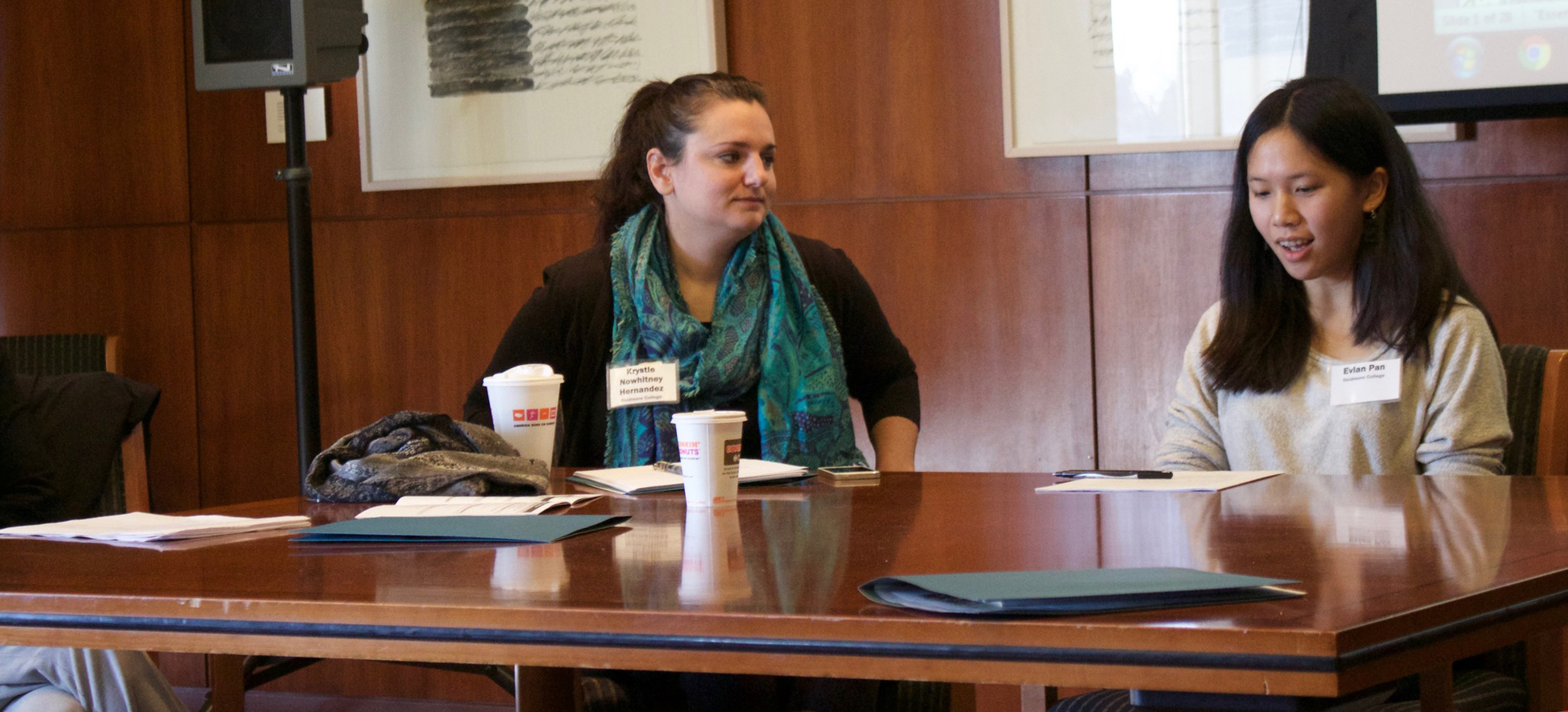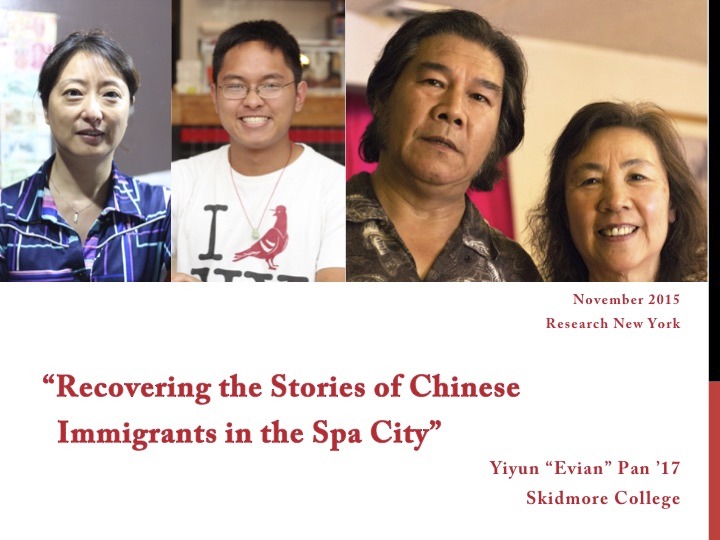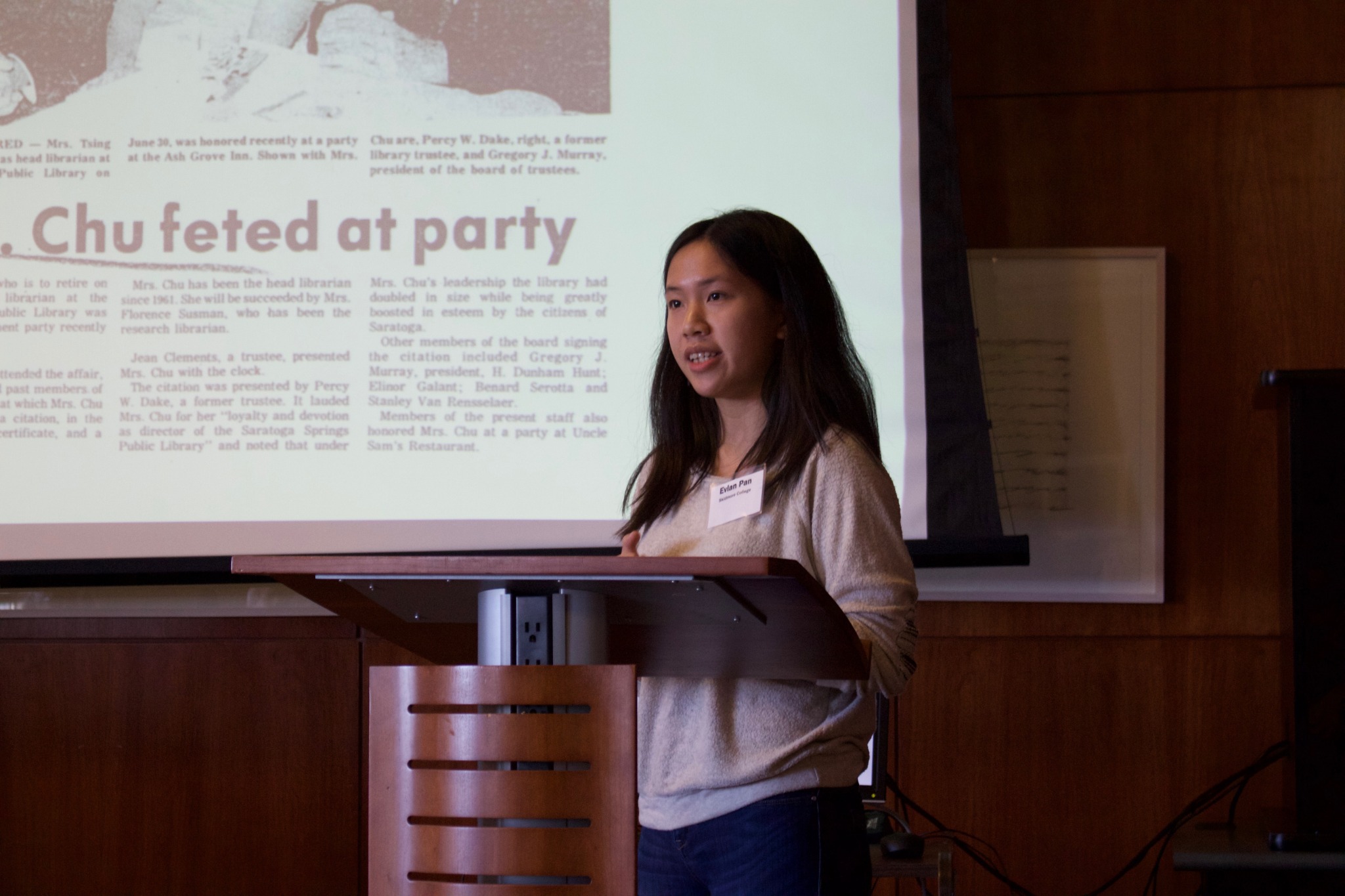After Storytellers': Evian Pan '17 on Chinese Immigrants in Saratoga
Storytellers' Institute alumnus and anthropology major Evian Pan presents her oral history project, "Recovering the Stories of Chinese Immigrants in Spa City" at the Researching New York Conference. —written by Evian Pan ’17

Nowhitney (l) and Pan (r) at Researching New York
On Friday November 20, Krystle Nowhitney Hernandez, a recent graduate of Skidmore’s Masters in Liberal Studies program (MALS) as well as a staff member at Student Academic Services, and I, a junior anthropology major, went to this year’s Researching New York Conference at the State University of New York at Albany. Under the conference’s theme “Communities of New York,” our panel, “Hidden Histories: Saratoga Springs, Storytelling, and Ethnic Identity in an American Place," explores tales and feelings of immigrant communities in the Spa City. Both of us adopted oral history as the main research method and documentary approach. Krystle focuses on the journeys of Latino immigrants who work as back-stretch workers at the racecourse, and my project looks at recent history and contemporary stories of Chinese/Chinese Americans.
The experience of shaping a media documentary project into an academic paper consumed much thinking. The Saratoga Chinese Oral History Project, initiated in June 2015 as my independent project during the inaugural MDOCS Storytellers’ Institute, investigates the Chinese experience of moving to and living in Saratoga Springs, a town that is “very very predominantly white,” according to one of my interviewees. Having received many critiques and suggestions during and after the institute, the project now outputs collected and edited materials through a multimedia website. So far I have completed three sets of interviews, and everyone’s stories are all fascinating and distinctive. Therefore when I was preparing to write the paper, I decided, after consulting with Eric Morser (history) and Jordana Dym (history/MDOCS), to go over the three interviews one by one. In addition, I included one section with historical data provided by City Historian Mary Ann Fitzgerald and another section to talk about the media documentary process which plays an essential role in the project.

Saratoga Chinese Oral History Project
While writing these people’s stories, the hardest part for me was to make choices from the audio clips that used to stand parallel with one another. As a writer, I believe each narrative needs a focal point—what’s the most striking part of that person’s story? What’s the most important or impressive part that my academic audiences would want to know? Yet, as a documentarian who also remains in contact and even becomes close to some of these people, I feel that I appreciate everything they shared with me, and every little bit of chatting is important. “It’s very hard to be objective,” agreed Melinda Lawson Union College's History Department, who commented on our panel. The process of selecting materials and narrating from a third-person viewpoint has taken up much energy, because I have to be the person who tells the stories and meanwhile let the people still speak for themselves.

Pan making presentation
The actual presentation part went really well. Both Krystle and I received questions and valuable comments from Lawson and our audiences. After our panel, I felt so encouraged and honored that several editors, archivists and historians approached me and offered potential opportunities, such as publication, to an undergraduate. Another archivist recommended that I apply for Documentary Heritage Program Grants offered by the New York State Archives (http://www.nysarchivestrust.org/a/grants/grants_dhp.shtml), which I think is worthwhile to share to MDOCSers who might find this opportunity of interest.
